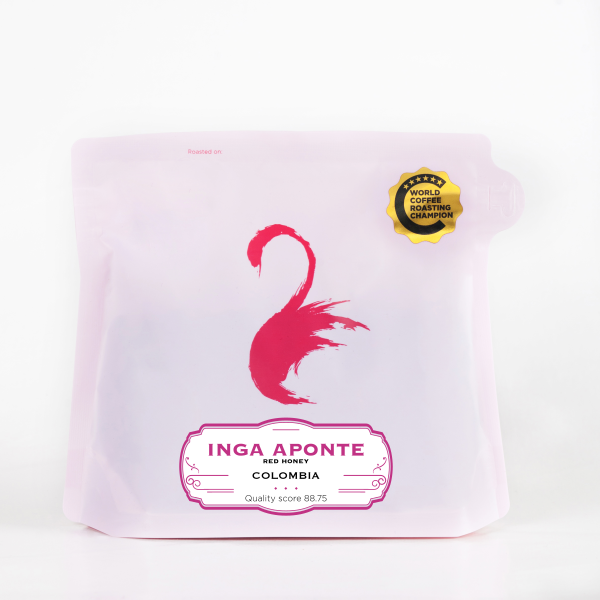




Colombia
250g
Cup Notes
Orange blossom / Panela / Strawberry / Raisins / Plums suggested for espresso and filter
QUALITY SCORE: 88.75
when we roast
We freshly roast to order all coffees on Monday, Wednesday and Friday (excluding national holidays), and ship the same day! Cut-off time is 11:59pm (UTC+1) of the day before the roast day. *We only ship whole beans*
Grown at astounding 2150 meter from quality pure Caturra variety, this coffee lot comes from the remote highlands of Narino.
The Inga community is comprised of descendants of the ancient, pre-hispanic Incas. During the period of conquest, they remained isolated high in the mountains that became their natural refuge. This community did not resume significant contact with the rest of Colombia until the second half of the nineteenth century. Unfortunately in the 1990's, contact was mostly criminal, and the Inga's refuge became a place of cruelty. For years the tribe was forcibly involved in poppy and heroin production under the influence of guerrilla groups, drug traffickers, and paramilitaries. The once-peaceful mountains teemed with illegal plantations and violence, in which the Ingas were trapped until as recently as ten years ago. In the last decade the mountains have become a safe zone for the Inga tribe, and illegal crops were eradicated to give way to a new culture: coffee! The Caturra variety has been planted in the Inga territory at an average of 2150 meters above sea level. This elevation, combined with the Galeras Volcano constantly shedding nutrient-rich ash, makes for an exceptionally complex and sweet coffee.
Caturra coffee varietal was developed by the Alcides Carvalho Coffee Center of the IAC, Instituto Agronomico of the Sao Paulo State in Brazil.
In 1937, IAC received seed samples of genetic materials originated on the border of the states of Minas Gerais and Espírito Santo. It was from Red Caturra and yellow Caturra cultivars. These two cultivars originated by natural mutation of Bourbon Red, originally a tall coffee shrub, found in the Serra do Caparaó , which is now a mountainous National Park north east of the city of Rio de Janeiro.
These are the main agronomic characteristics of the Red and Yellow Caturra varietals:
1. It is the of small size, of reduced length of internodes, leaves and side branches, providing compact appearance to the coffee shrub.
2. This is the first naturally occurred coffee mutation found, with small size and high yield capacity
3. They have excellent quality in the cup because they have virtually 100% of the Bourbon coffee in their genetic makeup.
4. the conditions in which they were planted in Brazil to cultivate Caturra showed low hardiness and consequent lack of vigor after a few harvests, which led to the premature depletion in yield.
During the honey process the coffee cherry skin is removed right after picking from the coffee tree, but some amount of the fleshy inside, the “mucilage”, remains while the beans are dried over raised beds. The white and yellow honeys have less mucilage left after being mechanically washed. Gold, red, and black honey coffees, on the other hand, have much more mucilage remaining and usually are not washed at all.
Red and black honey coffees usually take longer to dry because they are dried under shade.
This coffee is a red honey, and it is dried with an intentional slowness in mind. In fact, the first day on the raised beds it is not moved at all. It rests with all its mucilage intact simply concentrating in flavour as it sits. From then on after it turned over or raked once a day, but that is it. All in all, this coffee could take up to three weeks to dry, like that of a natural.